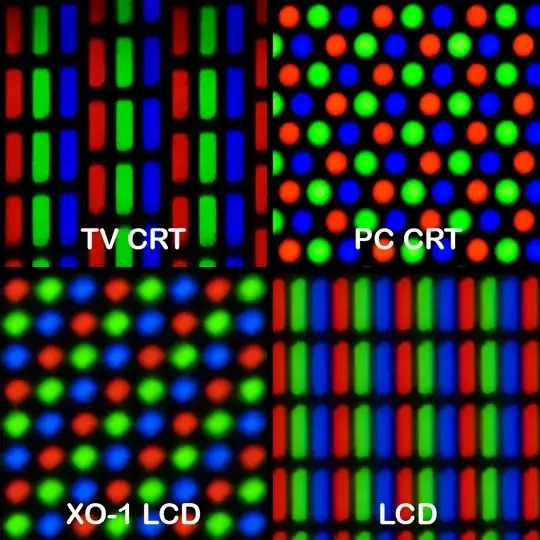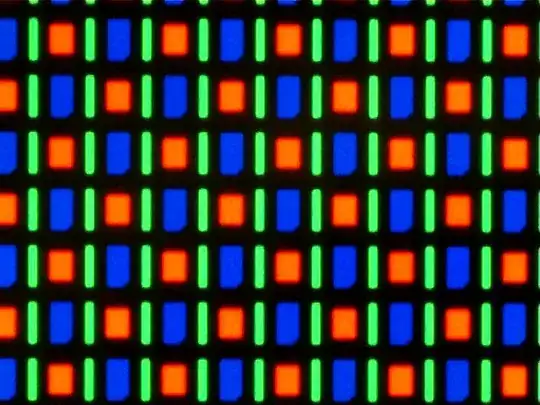Reading about how grid distribution when performing supersampling is suboptimal got me wondering: are there any displays that arrange their pixels in pattern other than regular grid? Wikipedia mentions that
The use of non-uniform grids is an active research area, attempting to bypass the traditional Nyquist limit.
...which is pretty much what using non-grid sampling in supersampling does. But this only links to a paper back from 2000, which isn't exactly new when it comes to quickly developing things like displays.
Another interesting point I've found is this picture:
 Pengo, CC BY-SA 3.0, via Wikimedia Commons
Pengo, CC BY-SA 3.0, via Wikimedia Commons
Apparently, TV CRT pixel grid seems to have its columns offset considerably, but is this a result of how beam is controlled (so fluorescent lines are actually uninterrupted)? Would it have a regular pixel grid if hooked to computer's video output?
Another related question I came across while researching this is Why are pixels square? - but it talks just about shape of pixels, not their arrangement.
